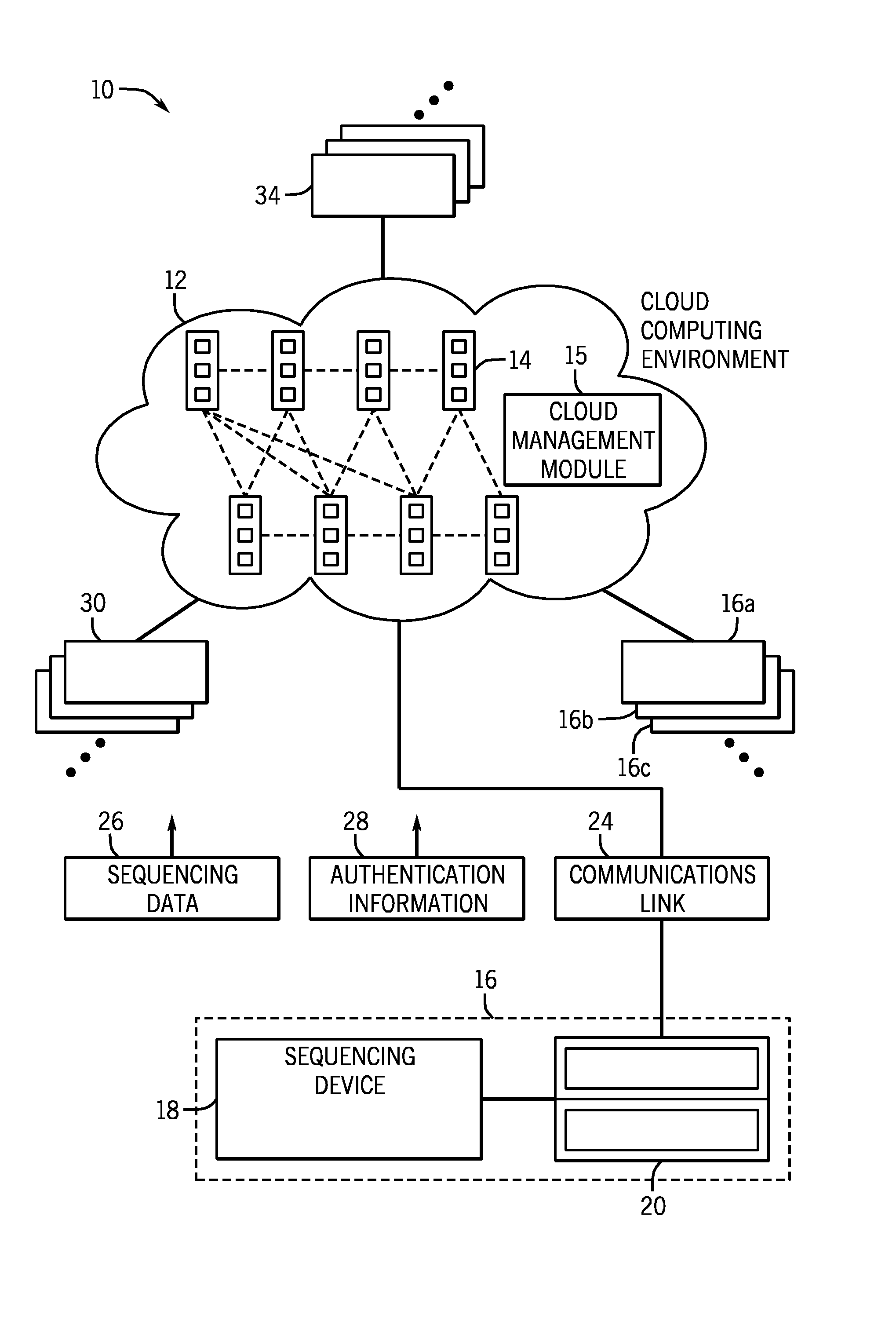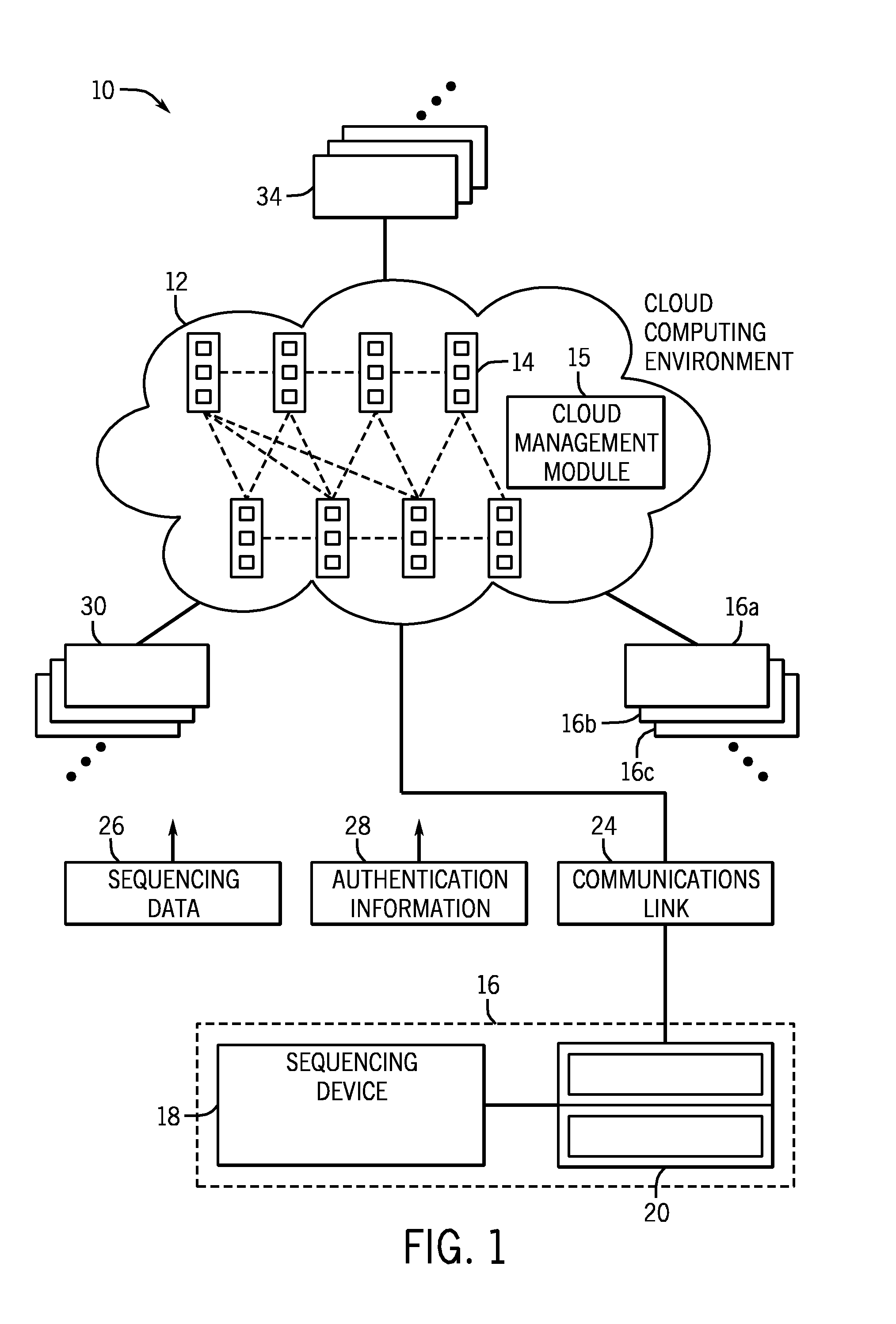Cloud computing environment for biological data
a cloud computing and biological data technology, applied in the field of biological samples, can solve the problems of reducing the cost per sequencing run, and achieve the effects of reducing processing and/or storage burden, significant capital investment, and reducing processing burden
- Summary
- Abstract
- Description
- Claims
- Application Information
AI Technical Summary
Benefits of technology
Problems solved by technology
Method used
Image
Examples
Embodiment Construction
[0031]Turning now to the drawings, and referring first to FIG. 1, a cloud computing environment 10 for biological data is illustrated diagrammatically. As used herein, the term “cloud” or “cloud computing environment” may refer to various evolving arrangements, infrastructure, networks, and the like that will typically be based upon the Internet. The term may refer to any type of cloud, including client clouds, application clouds, platform clouds, infrastructure clouds, server clouds, and so forth. As will be appreciated by those skilled in the art, such arrangements will generally allow for use by owners or users of sequencing devices, provide software as a service (SaaS), provide various aspects of computing platforms as a service (Paas), provide various network infrastructures as a service (IaaS) and so forth. Moreover, included in this term should be various types and business arrangements for these products and services, including public clouds, community clouds, hybrid clouds,...
PUM
 Login to View More
Login to View More Abstract
Description
Claims
Application Information
 Login to View More
Login to View More - R&D
- Intellectual Property
- Life Sciences
- Materials
- Tech Scout
- Unparalleled Data Quality
- Higher Quality Content
- 60% Fewer Hallucinations
Browse by: Latest US Patents, China's latest patents, Technical Efficacy Thesaurus, Application Domain, Technology Topic, Popular Technical Reports.
© 2025 PatSnap. All rights reserved.Legal|Privacy policy|Modern Slavery Act Transparency Statement|Sitemap|About US| Contact US: help@patsnap.com



